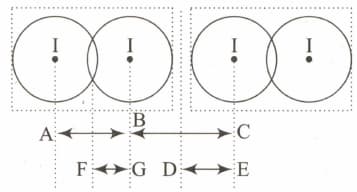Seema Saini Solutions for Chapter: Periodic Classification of Elements and General Inorganic Chemistry, Exercise 2: DPP
Seema Saini Chemistry Solutions for Exercise - Seema Saini Solutions for Chapter: Periodic Classification of Elements and General Inorganic Chemistry, Exercise 2: DPP
Attempt the practice questions on Chapter 1: Periodic Classification of Elements and General Inorganic Chemistry, Exercise 2: DPP with hints and solutions to strengthen your understanding. Chapterwise/Topicwise Daily Practice Problems (DPP) Inorganic Chemistry Part - 1 JEE Main & Advanced solutions are prepared by Experienced Embibe Experts.
Questions from Seema Saini Solutions for Chapter: Periodic Classification of Elements and General Inorganic Chemistry, Exercise 2: DPP with Hints & Solutions
Which of the following represents correct order of radius?
Which of the following statements(s) is/are correct?
is a crystalline solid. It is a molecular solid in which molecules are held together with van der Waals forces. Given diagram represents two adjacent molecules in solid.

If length and covalent radius of iodine is
Find the Van der Waals radius of atom.
is a crystalline solid. It is a molecular solid in which molecules are held together with van der Waals forces. Given diagram represents two adjacent molecules in solid.

If length and covalent radius of iodine is
Which of the following data is smaller as compared toand lengths represent, respectively:
According to Slater effective nuclear charge, due to screening, is not exactly equal to the actual nuclear charge of the nucleus of the atom. depends on the type of orbital In which the electron is housed, and on the ability of other electrons
in more penetrating orbitals to screen the electron in question from the nucleus.
The relative extent to which the various orbitals penetrate the electron clouds of other orbitals is The effective nuclear charge due to screening is given by where is the atomic number and is the slater screening constant values:
| Electrons in orbitals |
per electron in orbital | ||
| etc. | |||
| or orbital | |||
| or orbital | |||
Screening effect of one electron in the outermost orbital, is not considered in calculation of
What is the value of for
According to Slater effective nuclear charge, due to screening, is not exactly equal to the actual nuclear charge of the nucleus of the atom. depends on the type of orbital In which the electron is housed, and on the ability of other electrons
in more penetrating orbitals to screen the electron in question from the nucleus.
The relative extent to which the various orbitals penetrate the electron clouds of other orbitals is The effective nuclear charge due to screening is given by where is the atomic number and is the slater screening constant values:
| Electrons in orbitals |
per electron in orbital | ||
| etc. | |||
| or orbital | |||
| or orbital | |||
Screening effect of one electron in the outermost orbital, is not considered in calculation of
What is for
According to Slater effective nuclear charge, due to screening, is not exactly equal to the actual nuclear charge of the nucleus of the atom. depends on the type of orbital In which the electron is housed, and on the ability of other electrons
in more penetrating orbitals to screen the electron in question from the nucleus.
The relative extent to which the various orbitals penetrate the electron clouds of other orbitals is The effective nuclear charge due to screening is given by where is the atomic number and is the slater screening constant values:
| Electrons in orbitals |
per electron in orbital | ||
| etc. | |||
| or orbital | |||
| or orbital | |||
Screening effect of one electron in the outermost orbital, is not considered in calculation of
In which of the following cases the concept of is applicable?
